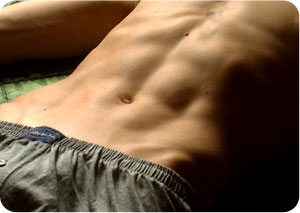
Understanding Liposuction
Liposuction is a cosmetic surgery procedure aimed at removing excess fat deposits from specific areas of the body, most commonly the abdomen, thighs, and hips. It involves the use of a suction technique to extract fat from beneath the skin. While liposuction can provide immediate and noticeable results, it’s crucial to understand its long-term efficacy, particularly for reducing belly fat.
How Liposuction Works
The liposuction procedure begins with the administration of anesthesia. Once the area is numbed, a small incision is made, and a thin tube, or cannula, is inserted into the fat layer. The cannula is connected to a vacuum device, which sucks out the fat cells. This process contours the treated area, resulting in a slimmer appearance.
Immediate Benefits of Liposuction
Liposuction offers several immediate benefits:
- Instant Results: Unlike non-surgical fat reduction methods, liposuction provides visible results almost immediately after the procedure.
- Targeted Fat Reduction: Liposuction allows for precise fat removal from specific areas, enabling customized body contouring.
- Boost in Self-Confidence: Many patients experience a significant boost in self-esteem and body image after achieving their desired look.
Long-Term Efficacy of Liposuction
While liposuction can deliver quick and dramatic results, its long-term effectiveness in maintaining reduced belly fat is influenced by several factors.
Maintenance of Results
Post-operative care and lifestyle choices play a critical role in maintaining the results of liposuction. Adopting a healthy diet and regular exercise regimen is essential to prevent the return of fat. Although the fat cells removed during liposuction do not regenerate, remaining fat cells can enlarge if weight is gained, potentially altering the body’s contour.
Weight Fluctuations
Significant weight fluctuations can impact the long-term success of liposuction. Patients who gain weight after the procedure may notice fat accumulation in untreated areas, leading to an uneven appearance. Conversely, maintaining a stable weight can help preserve the results achieved through liposuction.
Age and Metabolism
Age and metabolic rate are also critical factors. As individuals age, their metabolism slows down, making it easier to gain weight. Hormonal changes, particularly during menopause for women, can further influence fat distribution and retention. These factors underscore the importance of a consistent and proactive approach to weight management post-liposuction.
Potential Risks and Complications
Like any surgical procedure, liposuction carries potential risks and complications. These may include:
- Infection: There is a risk of infection at the incision sites, which can be minimized through proper post-operative care.
- Scarring: While incisions are small, some scarring may occur.
- Asymmetry: In some cases, uneven fat removal can result in asymmetrical contours.
- Changes in Skin Sensation: Temporary or permanent changes in skin sensation around the treated area can occur.
Alternatives to Liposuction
For individuals seeking non-surgical options to reduce belly fat, several alternatives exist:
- CoolSculpting: This non-invasive procedure uses controlled cooling to freeze and eliminate fat cells.
- Ultrasound Therapy: High-intensity focused ultrasound can target and destroy fat cells beneath the skin.
- Laser Lipolysis: Laser energy is used to liquefy fat cells, which are then naturally expelled by the body.
Combining Liposuction with Other Procedures
For enhanced and longer-lasting results, liposuction can be combined with other body contouring procedures:
- Tummy Tuck (Abdominoplasty): Often combined with liposuction, a tummy tuck removes excess skin and tightens abdominal muscles for a firmer, flatter stomach.
- Body Lift: This procedure addresses excess skin and fat on various parts of the body, often following significant weight loss.
- Fat Transfer: Fat removed during liposuction can be purified and injected into other areas of the body to enhance volume and shape.
Recovery and Aftercare
The recovery process following liposuction involves several stages:
- Immediate Post-Op: Patients may experience swelling, bruising, and discomfort. Compression garments are typically worn to reduce swelling and support healing.
- Short-Term Recovery: Most patients can return to light activities within a few days, though strenuous exercise should be avoided for several weeks.
- Long-Term Recovery: Final results are usually visible after several months, once swelling has fully subsided.
Lifestyle Changes for Sustaining Results
To maximize and sustain the benefits of liposuction, lifestyle changes are essential:
- Healthy Eating: A balanced diet rich in fruits, vegetables, lean proteins, and whole grains helps maintain a stable weight.
- Regular Exercise: Incorporating both cardio and strength training exercises can help burn calories and build muscle, further enhancing body contours.
- Hydration: Drinking plenty of water aids in digestion, reduces bloating, and helps maintain overall health.
Conclusion
Liposuction can be an effective solution for reducing belly fat, particularly when combined with a healthy lifestyle. While the procedure offers immediate and noticeable results, its long-term success largely depends on the individual’s commitment to maintaining a stable weight through diet and exercise. Understanding the factors that influence the longevity of liposuction results is crucial for anyone considering this cosmetic procedure.
For those seeking a lasting change, it is important to approach liposuction as part of a comprehensive plan for body contouring and overall health

